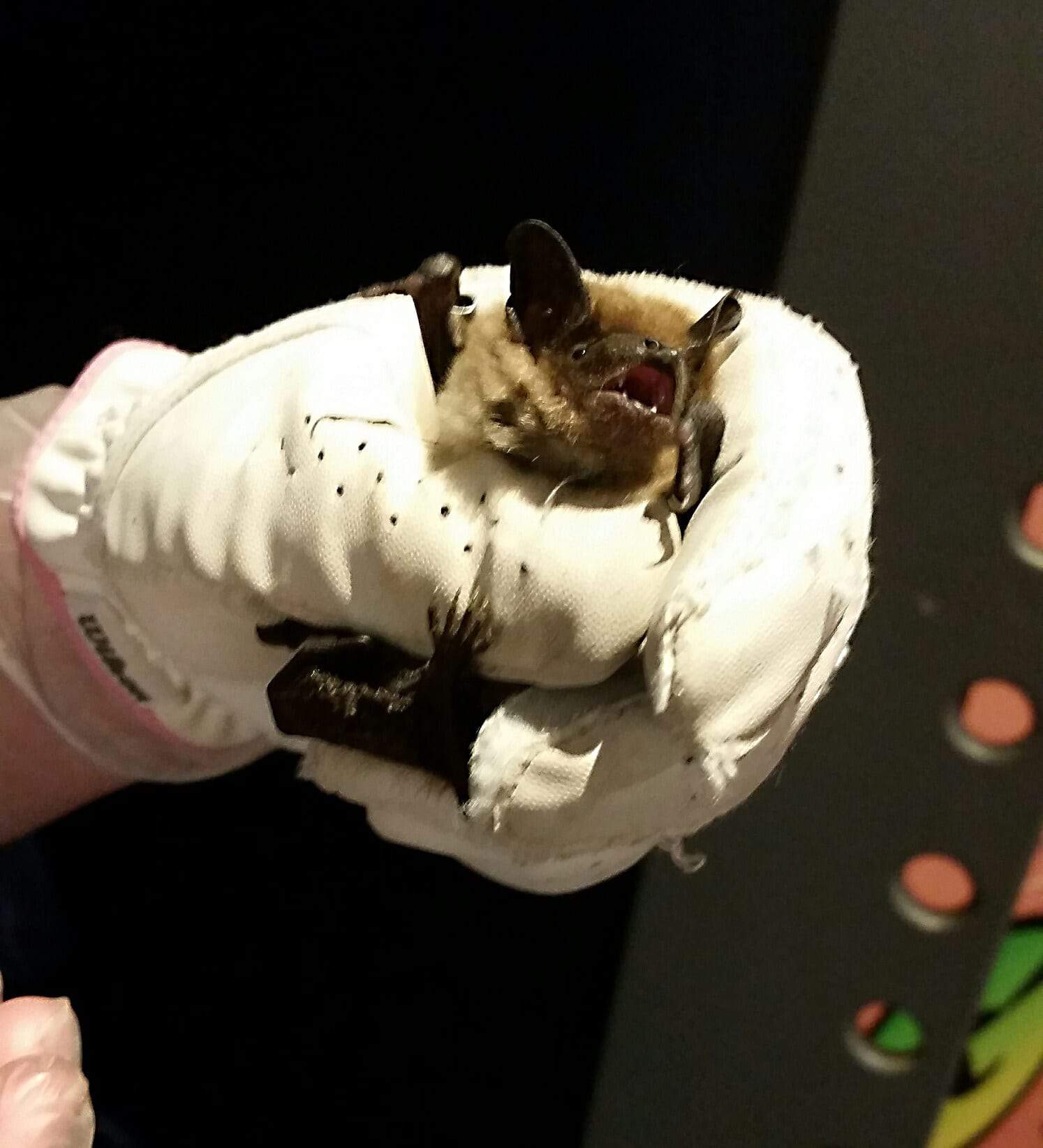Sask. Science Center Releases Bats

Author: alexa lawlor | staff writer

Look how cute it is!
by alexa lawlor
Fostered bats benefit the eco-system
Since October, the Saskatchewan Science Centre and the Biology department at the University of Regina have been working in partnership to foster bats found in places that are not ideal for hibernation.
The process of this partnership is quite simple. The University Biology department would take the bat first, to check to make sure it was healthy. From there, the bat would move to the Science Centre for care, a place to stay, and a possibility of learning for the people that visit the Science Centre.
The foster program for bats that are found happens each year, but this was one of the first years the Science Centre was able to release the bats back into the wild when the weather became warm again.
The species of bat seen most often in Saskatchewan is the brown bat, which is the species seen at the Science Centre. It is also important not to confuse these bats with the kind most often seen in popular culture, the vampire bat. Rather than turning into vampires and sucking blood, brown bats eat insects, which is incredibly useful to control the insect population.
With a quick trip to the Saskatchewan Science Centre, it is possible to learn many different facts about these creatures, many of which, most people are not aware of.
During the placement of the bats at the Science Centre, anyone who attended the Centre could see them and learn a little bit more about the species. Even though humans were constantly viewing the bats, Sheila Beaubien of the Science Centre emphasizes that the bats should not get too connected to the humans around them, even if they are the trainers.
“I try not to handle them too much, because they’re going back into the wild and I want to keep them still able to fend for themselves,” said Beaubien.
This year, the Science Centre was able to train the bats to eat out of a dish on the floor of their cage, rather than being handfed, which is another crucial aspect to make sure the bats are able to survive on their own.
The Science Centre had over ten bats to take care of, and on May 12, they were able to release most of them back into the wild to survive on their own. The release was open to the public, and generated a large crowd of over 300 people of all ages. However, there are still a couple of bats remaining that did not take off, and the Science Centre will try to release them again shortly in the near future, without an event.
According to Beaubien, the reason why the remaining bats did not take off is not totally certain. Many factors could have affected the decision the bats made to not take off on their own, and it is difficult to pinpoint which factor was the exact cause.
Editors Note: We have been informed that at least one of the bats has taken up residence at the University, apparently in pursuit of a post-secondary education. We at the Carillon wish the bat all the best in its venture into academia.









